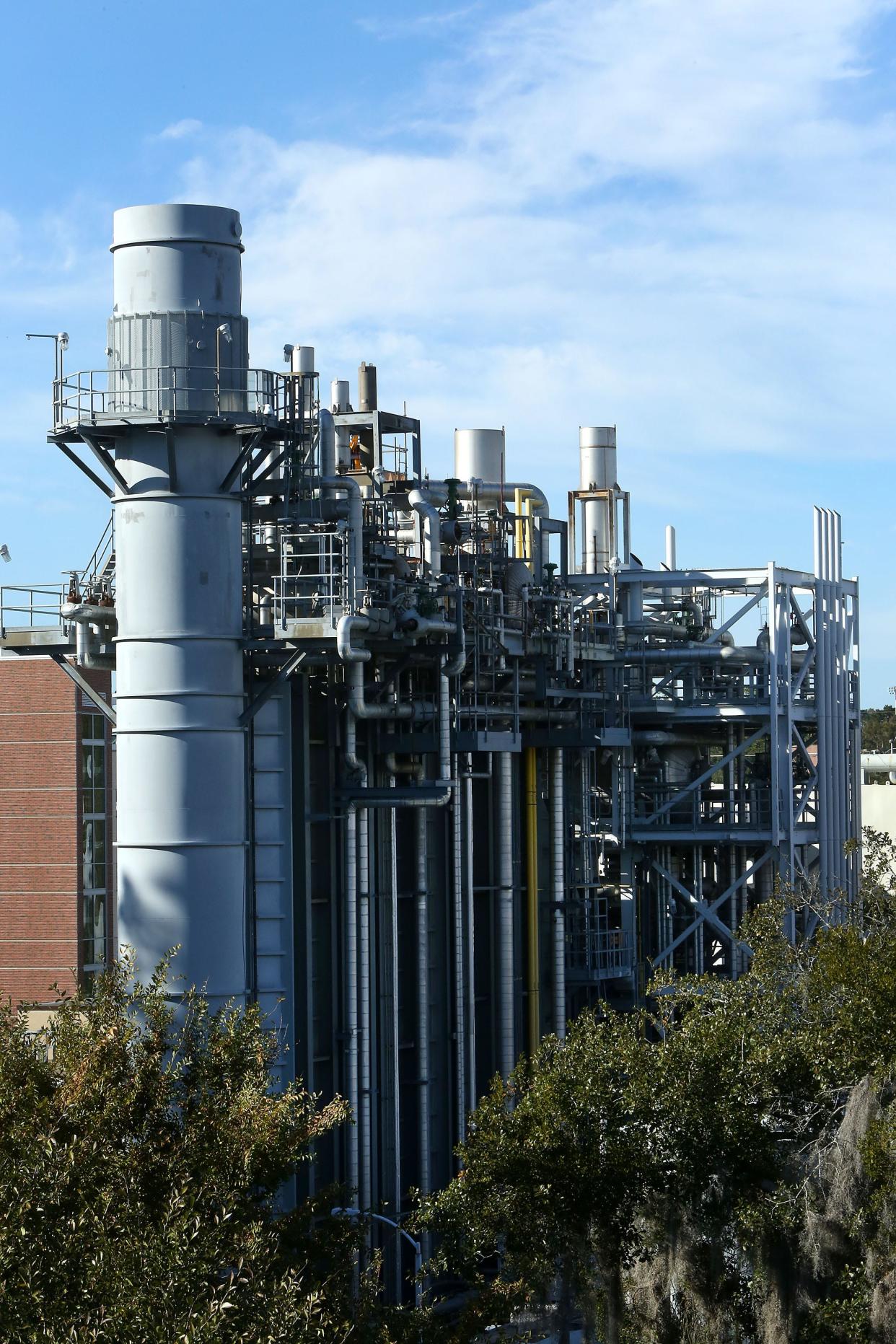UF's plan for fossil gas plant ignores viable solutions to climate crisis

As world leaders gather in Glasgow for COP26, the U.N. climate summit, the challenges they face are huge. The outcome will to a large extent determine how we will survive on a hotter planet and whether even worse levels of warming can be averted.
Here in Gainesville, we are witnessing our own climate drama at our most respected educational institution. The University of Florida recognizes its mission to educate, inform and be a good global citizen.
According to its website, UF is “working toward major institutional changes to reach its goal of carbon neutrality by 2025.” The recently updated UF Campus Action Plan 2.0 states that “UF has a special imperative to explore bold innovative solutions that address the environmental, social and economic risks posed by climate impacts.”
Then why is UF proposing a new 34 MW gas-fired Central Energy plant to produce electricity and steam? While the price of solar energy has fallen nearly 90% over the past decade, the cost of fossil gas has doubled over the past year, and continues to climb.
Many energy experts predict that the price of gas will never be as low as they have been in the past, making the proposed gas plant a financial blunder as well as contributing to the climate crisis.
Susan Glickman, Florida director for the Southern Alliance for Clean Energy, says that this is like “buying an eight-track cassette player to power the school.”
It’s not just outdated technology, it’s a financial boondoggle known as a stranded asset. A stranded asset is something — like a power plant— that once had value but no longer does, due to an external change, such as the climate emergency. The lifetime of a gas power plant is 50 years, so UF, and our environment, will be stuck with this outdated, polluting technology for at least two generations.
Five or 10 years ago, when the idea for a more efficient combined cycle gas plant for UF was first conceived, it was likely a good idea. Estimates are that the system will be 25% more efficient than the older system. But now, the cost of solar has plummeted, with a massive solar build-out in Florida underway.
Battery storage is a reality, and solar integrated with grid scale storage from 50 to 300 MW is being built by utilities in Florida and across the U.S. These combined systems reduce the need for additional fossil fuel generation, increase resilience and serve as a viable power source.
Why so much concern about burning gas? Ten and 20 years ago, it was considered a “bridge fuel” to replace coal until renewables were ready. Methane, the primary component of natural gas, is a remarkably fast-acting greenhouse gas; in the first 20 years after it is released, methane is 80 times more effective as a heat trapping gas than carbon dioxide.
Methane leaks exist at every stage of the natural gas production and transportation process. According to a major recent U.N. report, in order to tackle climate change, natural gas has got to go. Clean energy alternatives are ready.
How have other similar institutions dealt with the challenge of disruptive technologies in the energy sector? In 2015, Stanford University replaced its gas-fired power plant and the traditional network of underground steam and chilled-water pipes with grid-sourced electricity, two-thirds of which comes from renewable sources. As electricity from the grid becomes increasingly from renewable and carbon-free sources, Stanford is no longer locked into outdated, expensive, polluting energy.
Stanford also signed 25-year power purchase agreements for new on- and off-campus solar projects to supply over half of their electricity. The innovative facility yields compelling results: greenhouse gas emissions are slashed by 68%, fossil fuel use reduced by 65%. Why can’t UF develop a similar innovative system?
While science tells us that climate change is irrefutable, science also tells us that it is not too late to take action to avoid or reduce the worst impacts. If we are going to meet our climate targets, fossil gas must be rapidly phased out. And yet, UF has plans to build a gas-powered power plant to produce heat and steam, rather than develop innovative solutions.
More from David Hastings:
To avoid deaths from extreme heat, we need to switch to clean power
Solutions to the climate crisis are better and cheaper than ever
If UF goes ahead with their plan, they will be stuck with a stranded asset, and saddled with a debt burden long before the lifespan of the gas power plant has passed.
The COP26 conference validates that the consequences of the climate crisis are beyond dispute. We need to move beyond so called “bridge fuels” which were a mediocre alternative 10 years ago, and won’t satisfy our climate goals now.
UF can have a gas-fired plant or it can be true to its climate commitment. It cannot do both.
Dr. David Hastings is a climate scientist and member of the Sierra Club Suwannee-St. Johns Executive Committee.
Join the conversation
Send a letter to the editor (up to 200 words) to letters@gainesville.com. Letters must include the writer's full name and city of residence. Additional guidelines for submitting letters and longer guest columns can be found at bit.ly/sunopinionguidelines.
Journalism matters. Your support matters.
Get a digital subscription to the Gainesville Sun. Includes must-see content on Gainesville.com and Gatorsports.com, breaking news and updates on all your devices, and access to the Gainesville.com ePaper. Visit www.gainesville.com/subscribenow to sign up.
This article originally appeared on The Gainesville Sun: David Hastings: UF ignoring climate solutions with fossil gas plan


